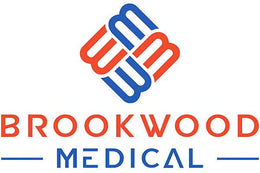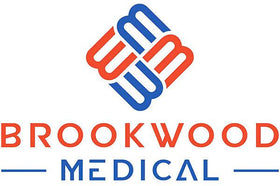The Vital Role of Masks in Curbing COVID-19 Spread

Overview
Masks are essential in preventing COVID-19 transmission by blocking respiratory droplets. Proper usage, community responsibility, and education are crucial for effectiveness. Different types of masks offer varying levels of protection, and innovations are emerging in mask technology. Compliance with mask guidelines can improve public health, and wearing masks may remain relevant even after the pandemic. Everyone has a role in fostering a safe environment through responsible mask use.
Frequently Asked Questions
1. What is the primary function of safety masks in preventing COVID-19?
2. Why is wearing a mask considered a community responsibility?
3. What are the different types of safety masks available?
4. How should safety masks be used correctly?
5. What innovations in mask technology have emerged during the pandemic?
As we navigate through the ongoing challenges posed by the COVID-19 pandemic, the importance of safety measures cannot be overstated. Among the most effective tools in our arsenal against the spread of the virus are safety masks for public use. This article dives deep into the role masks play in preventing the transmission of COVID-19, why they are essential, and how to use them effectively to protect ourselves and others.
Understanding COVID-19 and Its Spread
COVID-19, caused by the novel coronavirus SARS-CoV-2, primarily spreads through respiratory droplets when an infected person talks, coughs, or sneezes. These droplets can be inhaled by others nearby, leading to new infections. Because individuals can be asymptomatic and still spread the virus, the implementation of public health measures, including the use of safety masks for public use, is crucial in controlling the outbreak.
How Do Safety Masks Work?
Safety masks act as a barrier that blocks the respiratory droplets produced by the wearer. When both the infected and uninfected individuals wear masks, the overall risk of transmission is significantly reduced. Research has shown that wearing masks can decrease the risk of COVID-19 transmission by controlling the release and inhalation of these droplets.
The Benefits of Wearing Safety Masks for Public Use
The adoption of safety masks in public settings is essential for several reasons:
- Protection for Others: Wearing a mask primarily protects those around you. Masks have been shown to reduce the risk of virus transmission from an infected individual to others.
- Community Responsibility: Using masks signifies a commitment to public health and community welfare. It helps create a culture of safety and responsibility.
- Complementing Other Measures: Masks work best when combined with other preventive behaviors, such as maintaining physical distance, practicing good hand hygiene, and staying home when sick.
- Reducing Viral Load: Wearing a mask may potentially reduce the viral load of particles that reach an individual, possibly leading to milder illness if infection occurs.
Types of Safety Masks
Not all safety masks provide the same level of protection. Understanding the different types of masks can help in making informed choices for public use:
- Cloth Masks: These are commonly made from multiple layers of fabric and can be homemade or store-bought. While effective in reducing droplet spread, they vary greatly in their efficacy depending on materials used.
- Surgical Masks: Often made of non-woven fabric, these masks provide a higher level of protection than cloth masks and are designed for single use.
- N95 Respirators: These masks offer the highest level of filtration and are essential for healthcare workers. They can filter out at least 95% of airborne particles.
Correct Usage of Masks
To maximize the effectiveness of safety masks for public use, it's essential to wear them correctly. Here are some guidelines to follow:
- Cover Your Nose and Mouth: Ensure that the mask covers both the nose and mouth entirely. Gaps can allow droplets to escape or enter, reducing protection.
- Fit is Key: The mask should fit snugly against the sides of the face without gaps. For additional protection, consider masks with adjustable ear loops or ties for a better fit.
- Avoid Touching the Mask: Once in place, avoid touching your mask. If you must adjust it, sanitize your hands before and after.
- Single Use: For surgical masks and N95 respirators, dispose of them after use. Cloth masks should be washed regularly.
The Importance of Education and Compliance
Public adherence to mask guidelines is paramount. Educational campaigns promoting the importance of wearing safety masks for public use play a critical role in changing behavior. Communities can enhance compliance through:
- Awareness Programs: Informing the public about the benefits and proper usage of masks.
- Incentive Programs: Encouraging businesses and organizations to support mask-wearing through discounts or promotions for those who comply.
- Clear Guidelines: Providing clear instructions about mask wearing during local government announcements can help alleviate confusion.
Mask-wearing Guidelines Around the World
Different countries have adopted various approaches to mask mandates as they navigate the pandemic. It’s insightful to look at some of these practices:
- United States: Many states have had mask mandates in place, especially in indoor settings. Recommendations can differ significantly by locality based on infection rates.
- Europe: Countries like France and Germany have enforced strict mask mandates in public areas and have shown lower transmission rates as a result.
- Asia: Many East Asian cultures have a longstanding practice of wearing masks during cold and flu seasons, resulting in higher compliance rates during the pandemic.
Overcoming Challenges
While wearing safety masks for public use is crucial, several challenges exist that can hinder compliance:
- Comfort and Breathability: Some individuals find masks uncomfortable, especially for prolonged periods. Solutions include using lightweight masks or masks with breathable materials.
- Social Stigma: Individuals may feel socially pressured to remove masks in certain settings. Encouraging a supportive environment is essential in overcoming this challenge.
- Misinformation: Combatting misinformation around masks is crucial. Accurate information from reliable sources can help dispel myths.
Innovations in Mask Technology
Innovations in mask technology continue to evolve as the pandemic progresses. Some notable advancements include:
- Smart Masks: Technology-based masks equipped with sensors that monitor air quality and breathing patterns.
- Self-Sanitizing Masks: Masks treated with antimicrobial agents to reduce the risk of virus survival on the fabric surface.
- Customizable Mask Designs: Masks that allow for personalization, making the experience more engaging and reducing stigma.
Looking Ahead: Masks in a Post-Pandemic World
The future of mask-wearing after the pandemic will likely shift, but certain lessons will remain relevant. Understanding the role of safety masks for public use in preventing respiratory infections will have long-term implications for public health.
The Future of Public Safety and Health
As we move toward a future where COVID-19 may become an endemic virus, the principles that have guided our response can continue to serve us well. Public health officials advocate for ongoing use of masks in crowded venues or during respiratory illness outbreaks.
Moreover, incorporating mask-wearing education into public health initiatives can ensure that masks are viewed as tools of protection, not just during pandemics but also during seasonal flu outbreaks and similar health threats.
Your Role in the Movement
Ultimately, the responsibility of overcoming the spread of COVID-19 through masks lies with every individual. By wearing safety masks for public use, you contribute to a safer community. Empower others around you to join the movement, leading by example and promoting awareness. Together, we can pave the way for a healthier tomorrow, where we protect each other from respiratory infections effectively.
Stay informed, stay safe, and let’s continue to support one another in this crucial endeavor.
Linked Product

KN95 Face Masks, CE Certified, 5PLY, Protective Mask, K95
The KN95 Face Masks feature a 5PLY construction that effectively filters out at least 95% of airborne particles, providing reliable protection for both healthcare professionals and everyday users. CE certified for compliance with European safety standards, these masks offer an added assurance of quality. Their secure fit enhances protection, making them suitable for use in various public settings where safety is a priority.
View ProductExplore the world of another Shopify or Wix store owner. Visit their captivating online store. Keep in mind that this is a promotional link, and we are not responsible for the content of the linked store.






